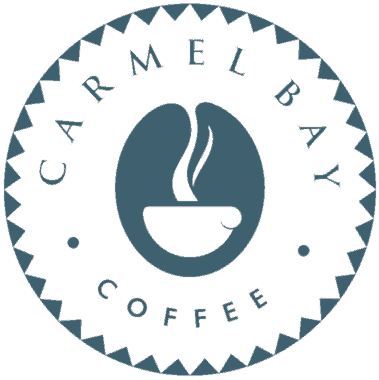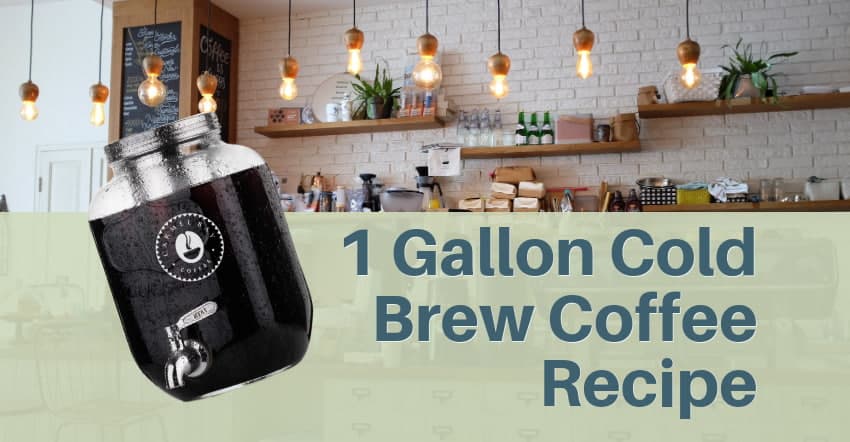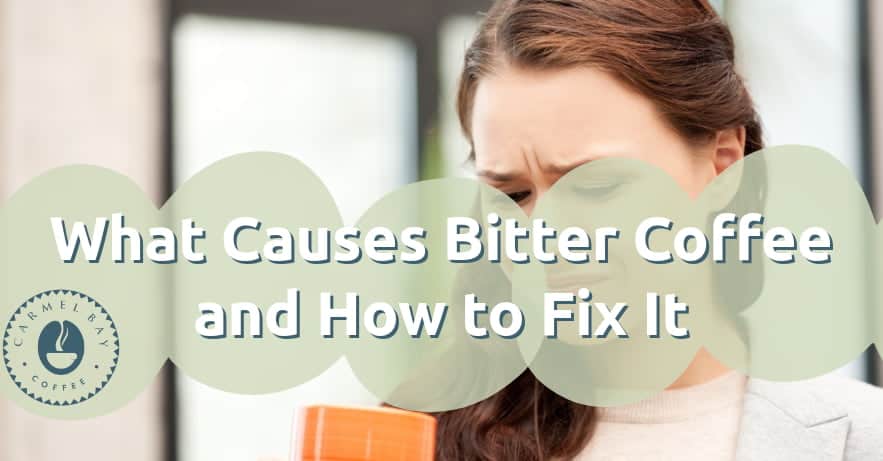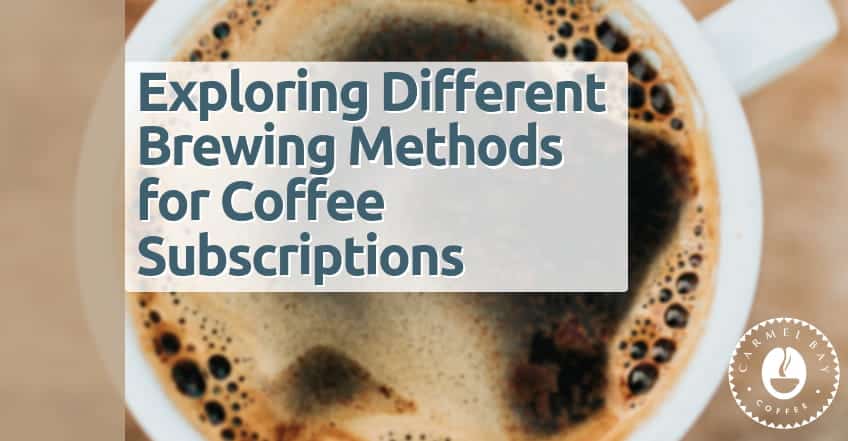If you’ve ever taken a sip of cold brew coffee and cringed at its bitter taste, you’re not alone. In this section, let’s get into the reasons behind the bitterness in your cold brew.
We’ll uncover the concept of over-extraction and its detrimental impact on flavor, leaving your coffee with an unpleasant taste of burnt bitterness on your palate. Additionally, we’ll introduce you to tannic acid, the culprit responsible for the bitter notes that can arise in an over-extracted cold brew. So, let’s dive in and unravel the mysteries of your bitter cold brew experience.
Key Takeaway:
- Adjusting the grind size to coarser for slower extraction can help to make cold brew less bitter. Fine ground beans can lead to over-extraction and bitterness.
- Reducing the soaking time can also contribute to a less bitter flavor in cold brew. Prolonged soaking can increase extraction and bitterness.
- Exploring different brands or origins of coffee beans can provide a less bitter taste in cold brew. Different beans have varying flavor profiles, so experimenting can lead to a more enjoyable experience.
- Using the correct ratio of coffee to water is crucial in making cold brew less bitter. Finding the optimal balance ensures a smooth and balanced flavor.
Explanation of Over-Extraction and Its Effect on Flavor
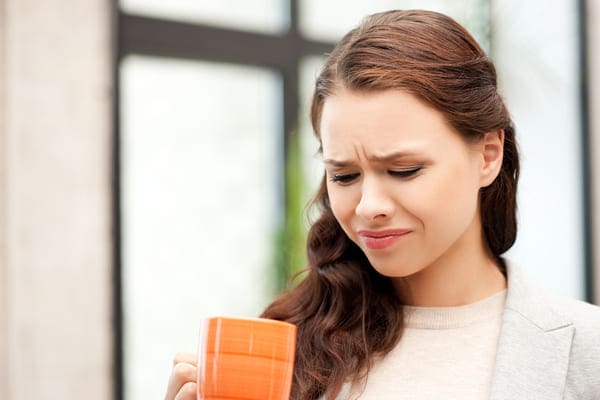
Cold brew coffee can taste bitter due to over-extraction, negatively affecting flavor. When coffee is over-extracted during the brewing process, it means that too much of the solubles have been extracted from the beans, resulting in a bitter taste.
Over-extraction occurs when brewing is too long or when fine ground beans are used. The longer the coffee grounds are in contact with hot water first, the more tannic acid is released, contributing to bitterness. Understanding over-extraction and its effect on flavor is important to achieve a smooth and balanced cold brew experience.
Tannic acid: the bitter villain lurking in your over-extracted cold brew.
Tannic Acid Is the Source of Bitterness in Over-Extracted Cold Brew
Tannic acid, a compound found in over-extracted cold brew coffee, is responsible for its bitter taste. During the extraction process of hot coffee, tannic acid is released from the coffee grounds and dissolved into the liquid, leading to a bitter flavor profile. This introduction sheds light on tannic acid as the primary source of bitterness in over-extracted cold brew.
In over-extracted cold brew, tannic acid contributes to the unpleasant taste. When coffee grounds are finely ground, they increase the surface area exposed to water during brewing. This leads to increased extraction of tannic acid, intensifying the bitterness. Additionally, prolonged soaking time further enhances this extraction process, resulting in a more pronounced bitter taste.
It is important to note that the bitterness of cold brew can be minimized by adjusting certain variables.
- Using coarser ground beans allows for slower extraction and reduces the contact between coffee and water, releasing less tannic acid.
- Reducing water temperature during the soaking time allows for a shorter exposure to cold water, consequently decreasing the extraction of tannic acid.
Exploring different brands or origins of coffee beans can also contribute to a less bitter cold brew experience. Some beans naturally contain lower levels of tannic acid or have flavor profiles that balance out their bitterness. Finally, using the correct ratio of coffee to water when making cold brews is crucial, as this ensures optimal extraction without excessive bitterness.
By understanding and addressing the role of tannic acid as the source of bitterness in over-extracted cold brew, coffee enthusiasts can enjoy a smooth and balanced cold brew experience.
Adjusting variables like brewing methods such as grind size and soaking time while considering different bean options will help achieve a less bitter and delicious cup of cold brew.
Too much grind or too little time, the bitter taste of over-extraction can quickly ruin your cold brew experience.
If you’re inspired to try making your own smoother cold brew at home, don’t miss our detailed 1 Gallon Cold Brew Coffee Recipe. It’s the perfect guide to help you craft a delightful brew in larger batches!
Factors That Contribute to Over-Extraction and Bitterness
When it comes to making cold brew, some factors can contribute to over-extraction and result in a bitter taste. To better understand these factors, let’s take a closer look at the impact of fine ground beans on extraction and the effect of prolonged soaking time on extraction.
Fine ground beans can lead to increased surface area, allowing for more extraction of bitter compounds.
Likewise, a longer soaking time can intensify bitterness. Understanding these elements will help us adjust our cold brew technique for a smoother and more enjoyable cup of coffee.
The Impact of Fine Ground Beans on Extraction
Fine ground beans significantly impact the extraction process, affecting the flavor profile of cold brew coffee. The smaller particle size of fine ground beans increases the surface area for water to come into contact with, resulting in quicker and more extensive extraction.
This can lead to over-extraction, causing the cold brew to taste bitter.
Impact on Coffee Extraction:
| Extraction Time | Resulting Flavor Profile |
|---|---|
| Short (Under-extraction) | Sour, acidic, lacking depth |
| Optimal | Balanced, full-bodied, flavorful |
| Long (Over-extraction) | Bitter, astringent, flat |
Finding the right balance in extraction time is crucial to achieve the desired flavor profile in coffee. Over-extraction, which results from brewing coffee for too long, can lead to increased bitterness in the coffee.
Details About Coffee Extraction
The increased surface area facilitates a faster and more thorough extraction process when using fine-ground beans. However, this can also lead to over-extraction if not properly controlled. Therefore, adjusting other variables, such as soaking time, is essential to achieve a balanced and flavorful cold brew.
CBC Pro Tip: Experiment with different grind sizes to find the optimal balance between flavor extraction and avoiding bitterness in your cold brew.
Procrastinating in the drip coffee maker world leads to bitterness, just like putting off your work leads to a bitter boss.
The Effect of Prolonged Soaking Time on Extraction
Extended soaking during cold brew coffee extraction greatly affects its flavor.
As brewing time lengthens, compounds like tannic acid, causing bitterness, increase. Managing soaking time is key for a balanced cold brew.
The table shows that grind size and soaking duration influence bitterness. Coarser and coarse grinds with shorter soaks result in less bitterness, while finer grinds with prolonged soaks intensify it.
| Grinder Setting | Soaking Time (hours) | Extraction Level (bitterness rating) |
|---|---|---|
| Coarse | 12 | Low |
| Coarse | 24 | Medium |
| Fine | 12 | Medium |
| Fine | 24 | High |
To perfect cold brew flavor, experiment with grind sizes and soaking times. Historically, it’s been found that shorter soaks yield milder flavors, while longer ones enhance bitterness. Adjusting grind size and soaking duration can lead to a more pleasant cold brew experience.
Solutions To Make Cold Brew Less Bitter
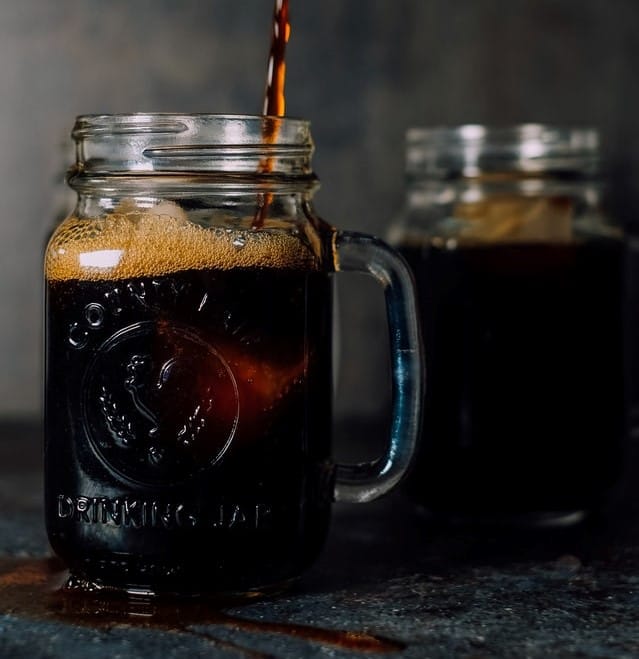
Regarding enjoying a smoother and less bitter cold brew, a few solutions are worth exploring. One approach is adjusting the grind size to a coarser setting, allowing for a slower extraction process that can lead to a mellower flavor profile.
Another option is reducing the soaking time whilst experimenting to find the perfect balance of flavors. Additionally, trying different brands or origins of coffee beans can result in a less bitter taste.
Lastly, using the correct ratio of coffee to water is crucial to achieve the desired outcome. Implementing these techniques can elevate your cold brew experience and minimize its bitterness.
Adjusting the Grind Size to Coarser for Slower Extraction
Adjusting the grind size to a coarser setting can help slow down the extraction process in cold brew coffee. By using a coarser grind, the water takes longer to pass through the grounds, resulting in a smoother and less bitter flavor profile.
1. Adjust the grind size: Use a grinder with adjustable settings and select a coarser grind size. This will prevent finer particles from over-extracting coffee or too quickly, resulting in a more balanced flavor.
2. Slow down extraction: Aim for a longer steeping time with the coarser grind when brewing cold brew. The slower extraction rate allows for a more gentle release of flavors from the coffee grounds, reducing bitterness.
3. Experiment and fine-tune: It’s important to find the optimal balance of flavor by adjusting the grind size and steeping time to suit your preferences. Start with a coarser grind and gradually prolong or shorten the brew and steeping times until you achieve the desired taste.
Adjusting the grind size to coarser for slower extraction allows you to control how quickly flavors are released from the coffee grounds during cold brew preparation.
Less soak, less bitter, more flavor—optimize your cold brew without drowning bitter flavors in bitterness.
This can result in a smoother, less than bitter coffee taste experience as compared to using finer grinds that lead to over-extraction and increased bitterness. Experimentation is key in finding your preferred balance of flavors when making cold brew coffee.
If you’ve ever wondered about the root causes behind that occasional bitter cup of joe, our article What Causes Bitter Coffee and How to Fix It delves deep into the reasons and offers solutions to ensure every sip is just right. This article is more focused on all brew methods.
Reducing the Soaking Time To Find the Optimal Balance of Flavor
Reducing the soaking time to achieve the perfect flavor balance effectively minimizes bitterness in cold brew coffee. By adjusting the duration of the steeping process, you can enhance the overall taste of your beverage.
To reduce the soaking time and find the optimal balance of flavor, follow these three steps:
- Experiment with different steeping durations: Start by reducing the soaking time by a few hours and taste-test your cold brew. Gradually decrease the duration until you find the desired flavor profile that is less bitter and more balanced.
- Monitor extraction levels: Pay close attention to how long the coffee flavors take to fully extract during steeping. You may find that a shorter soaking time still allows for sufficient extraction without resulting in excessive bitterness.
- Adjust grind size accordingly: Fine ground beans tend to extract more quickly, contributing to potential over-extraction and increased bitterness. To counteract this, use a coarser grind which slows down extraction, allowing for a shorter soaking time without sacrificing flavor.
Unique details not mentioned previously include understanding that reducing steeping time can help achieve an optimal flavor balance without compromising taste quality or strength.
As suggestions:
- Consider experimenting with different brands or origins of coffee beans as they may have varying levels of tannic acid, which is responsible for bitterness.
- Maintaining the correct ratio of coffee to water also plays a crucial role in finding a less bitter taste in cold brew coffee by ensuring proper extraction without overdoing it.
By reducing the soaking time, you can create a harmonious balance between flavor intensity and bitterness in your cold brew coffee. Remember to experiment with different variables such as grind size and coffee-to-water ratio to fine-tune your coffee brewing process and enjoy a satisfyingly smooth and balanced cup of cold brew.
Unlock a world of flavorful possibilities by venturing beyond your usual coffee beans and embracing different brands, other flavors or origins for a less bitter, more delightful cold brew experience.
Exploring Different Brands or Origins of Coffee Beans for a Less Bitter Taste
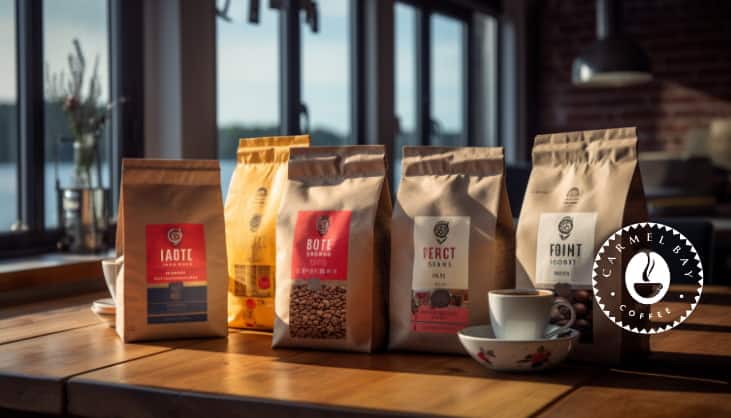
Experiment with various coffee bean brands or origins to lessen bitterness in cold brew coffee. Different beans have distinct acidity and bitterness levels, offering diverse flavors.
Trying different origins lets you experience unique regional characteristics. By sampling various brands or origins, you might find ones that perfectly match your taste buds, elevating your cold brew experience.
CBC Pro Tip: Keep a journal of your tasting notes for each brand or origin. It aids in future purchasing decisions.
Balancing coffee and water is key; an imbalance can result in an overly bitter brew.
Importance of Using the Correct Ratio of Coffee to Water
Using the correct proportion of coffee to water is crucial in achieving a balanced and satisfying cold brew experience. Here’s why it is important:
- 1. Extracts optimal flavor: The correct ratio ensures that the coffee grounds are properly saturated, allowing for the extraction of the desired flavors and aromas.
- 2. Prevents over-extraction: Too much coffee relative to water can result in over-extraction, leading to a bitter and unpleasant taste. Thus, maintaining the right ratio helps avoid this undesirable outcome.
- 3. Achieves desired strength: The proper ratio allows you to control the strength of your cold brew according to your preference. Adjusting the coffee-to-water ratio enables you to find your ideal balance between boldness and smoothness.
- 4. Consistency in taste: Using consistent measurements of coffee and water ensures that you achieve a consistent flavor profile each time you make cold brew, making it easier to replicate your preferred taste.
- 5. Avoids wastage: By using the correct ratio, you can avoid wasting precious coffee beans or diluting the flavor unnecessarily by adding too much or too little water.
Understanding the importance of using the correct ratio of coffee to water can enhance your cold brew experience significantly.
It affects the overall flavor and provides control over extraction levels, strength preferences, consistency in taste, and avoiding unnecessary wastage.
To ensure an optimal coffee ratio throughout, start with a standard guideline such as 1 part coffee to 4 parts water and adjust based on personal preference. Experimenting with different ratios will allow you to explore new flavors while finding what works best for you.
Remember that higher coffee-to-water ratios may produce stronger brews, while lower ratios yield milder flavors.
Remember that individual tastes vary, so don’t be afraid to tailor the ratios accordingly. Fine-tuning this element will result in a cold brew that is perfectly suited to your palate.
Five Facts About How to Make Cold Brew Less Bitter:
- ✅ Over-extracted cold brew coffee tastes bitter due to the presence of tannic acid released from the beans into the water.
- ✅ Finely ground beans increase the surface area, leading to quicker extraction and a more bitter flavor.
- ✅ Soaking the beans in water for too long also contributes to over-extraction and bitterness in cold brew.
- ✅ Coarsely grinding the beans can help prevent over-extraction and reduce bitterness in cold brew.
- ✅ Experimenting with brewing time and using different coffee beans can also help reduce bitterness in cold brew.
FAQs About How To Make Cold Brew Less Bitter
Why Does My Cold Brew Coffee Taste Bitter?
A cold brew coffee will taste bitter if it’s been over extracted and a large amount of bitter tasting tannic acids have come out of the beans and into the water. Overextraction can result from too fine a bean grind and also from soaking the beans in water for too long.
What Causes a Cold Brew To Taste Over-Extracted and Bitter?
A cold brew coffee can taste over-extracted and bitter if the beans used were ground too finely or if they were soaked in the water for too long. Finely ground beans and longer soaking times increase the extraction of tannic acids, resulting in a more bitter taste.
How Can I Make My Cold Brew Coffee Taste Less Bitter?
To make your cold brew coffee taste less bitter, you can try the following adjustments: grind your beans coarser, soak the ground beans for less time, try a different brand or origin of coffee bean, and make sure you’re using the correct ratio of coffee to water.
What Is the Optimal Brewing Time for Cold Brew?
The optimal brewing time for cold brew can vary depending on personal preference low quality coffee itself. Generally, people recommend leaving the coffee beans in water for 12-24 hours. However, you can adjust the brewing time by taste testing the cold brew every few hours and ending the brew when it reaches a balance of flavor between under-extraction and over-extraction that you like.
Should I Use a Burr Grinder or a Blade Grinder for Grinding Coffee Beans?
If you want to achieve an equal and uniform grind for your coffee beans, using a burr grinder instead of a blade grinder is recommended. Burr grinders create a consistent grind size, allowing all the beans to be extracted evenly, resulting in a more balanced and non-bitter taste.
Can Adding Milk or Creamer Help Reduce the Bitterness of Cold Brew Coffee?
Yes, adding milk or creamer to your cold brew coffee can help lighten the flavor of sour coffee and make it easier to drink. These additions can help balance out the bitterness and create a smoother and more enjoyable taste.
Wrapping Up: Enjoying a Smooth and Balanced Cold Brew Experience
For a smoother cold brew, reducing bitterness is key. Use quality, low-acidity coffee beans and a coarser grind to limit bitter extraction. Use filtered water for purity and steep longer at cooler temperatures for a milder flavor. Adjust brewing ratios to find your flavor balance. Immersing coffee grounds for extended periods allows for gradual flavor extraction, enhancing the brew’s quality.
Interestingly, cold brew coffee is less acidic than its hot counterpart due to its prolonged steeping and lack of heat, offering a smoother, less bitter taste.
For those keen on diving deeper into the world of coffee, our guide on Exploring Different Brewing Methods for Coffee Subscriptions offers a comprehensive look into various techniques that can elevate your daily brew.
